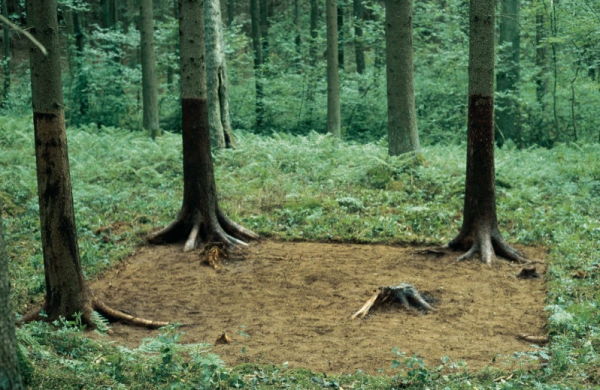Michael Sailstorter
Saturday, 22 January 2011
Work from his oeuvre.
“Transformations, contextual adjustments, spatial appropriation – in Sailstorfer’s work one is quick to recognize his interest in everyday objects, materials that surround us, his hands-on fascination with the specific identity and history of these objects and the fate they may evoke – in short the inherent associations they trigger, and which he can now make use of. He really has a good go at these objects, striping them down, taking them apart, deforming, adapting and putting them together anew, displacing reinterpreting and rededicating them. Such a deformation of the meaning and purpose of the object, while at the same time using and retaining its formal qualities does not result in destruction; the aim, rather, is a fresh configuration and a change in meaning. Here, both the space these objects occupy and the space that surrounds them are of essential importance. In this sense even Sailstorfer’s smaller objects are installations, integrally bound in context with the identity of the place they are exhibited. This is the first formally accessible level. But this does not account for the strength and originality of Sailstorfer’s works. In all his oeuvres there lingers also an immensely poetic spirit. A feeling for sentiment which is not construed or calculated but which is an integral part of the work and absolutely certain to have been experienced by the artist. Even a year spent studying at Goldsmiths College in London, one of the training grounds for theory-laden artistic work, did not detract Sailstorfer from this path, quite the contrary, it perhaps even strengthened it. We recognize, with something akin to relief, that the artist does not get lost in a whirr of highly complex, self-referential, formally aesthetic configuration of objects, but rather proves to be a practical dreamer in the animated world of objects. What makes Sailstorfer’s works so extraordinary are the flashes of longing in their objective, the melancholic humor in the way they are produced and the conscious tragedy in the moment the objective is achieved.
…
This particular storyteller gets to work with a power drill and a jig saw and has everything well under control. You want to see how to make a tree house out of a glider? No problem, coming right up – and in a flash two glider planes are quickly turned into the standard product of juvenile escapism. His installations are based on simple, comprehensible basic structures and are not experimental technical arrangements. They are often also to do with a human aspiration for self-occupation and articulation and the necessity of leaving behind traces, or destroying them, as the case may be. There can scarcely a be more impressive, melancholic and dreamy work than Bethlehem(2004) which is about precisely these states of existence as well as the artistic striving that articulates itself in precisely these moods, a self-developed, drivable message of sensation and pleasure, or Elektrosex (2005), in which two lanterns are placed opposite each other, united by discharging electric current, but otherwise placed at a distance from one another, eternally unmovable. Confronted with works such as these, which are sensual, comprehensible in rational terms, extremely practical in terms of their construction, yet at the same time absurd, one recognizes the poetry of yearning, of the euphoria involved in the process of achieving a goal and the melancholy of fulfilling a task. Home, travel, arrival, relationship – Sailstorfer, a surreal storyteller who addresses fundamental themes to do with our existence as individuals, is above all a rediscovery of sentiment in art and the objects of our time.” – Max Hollein.



